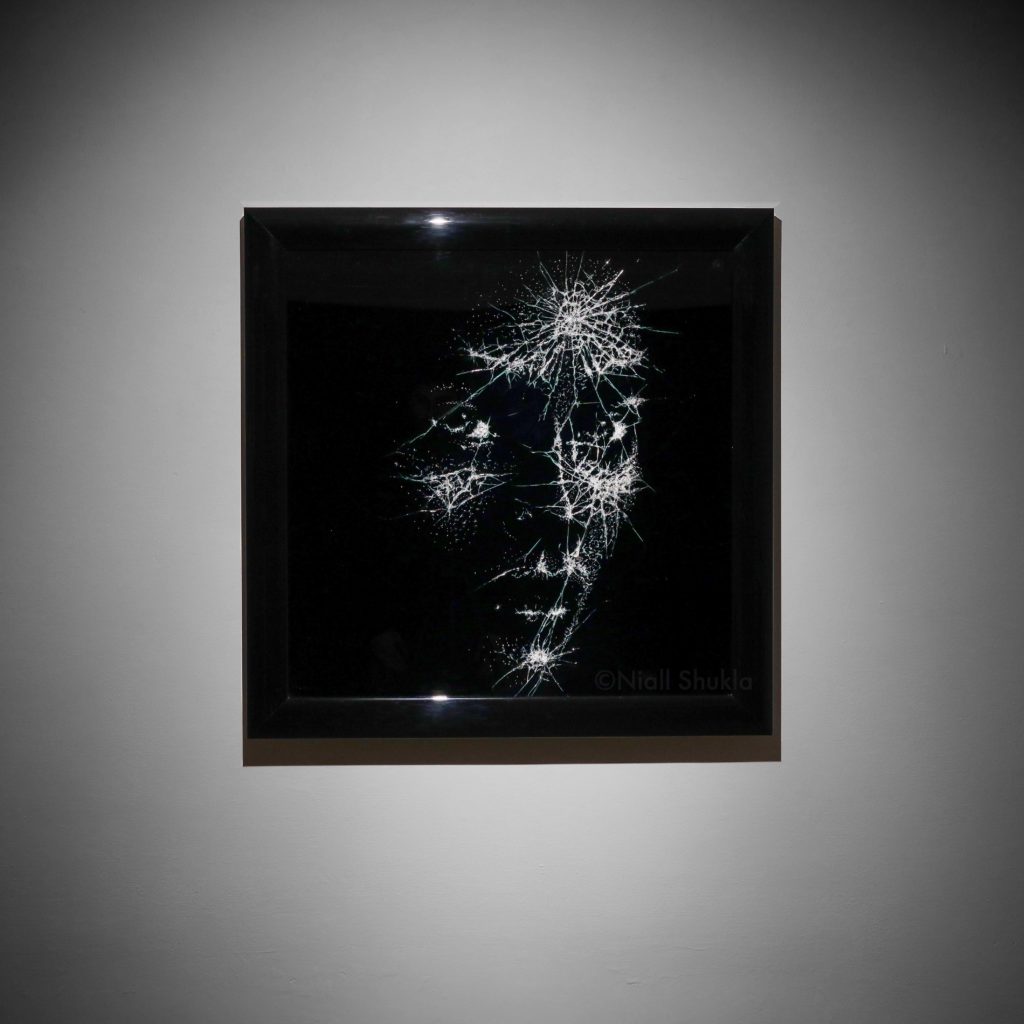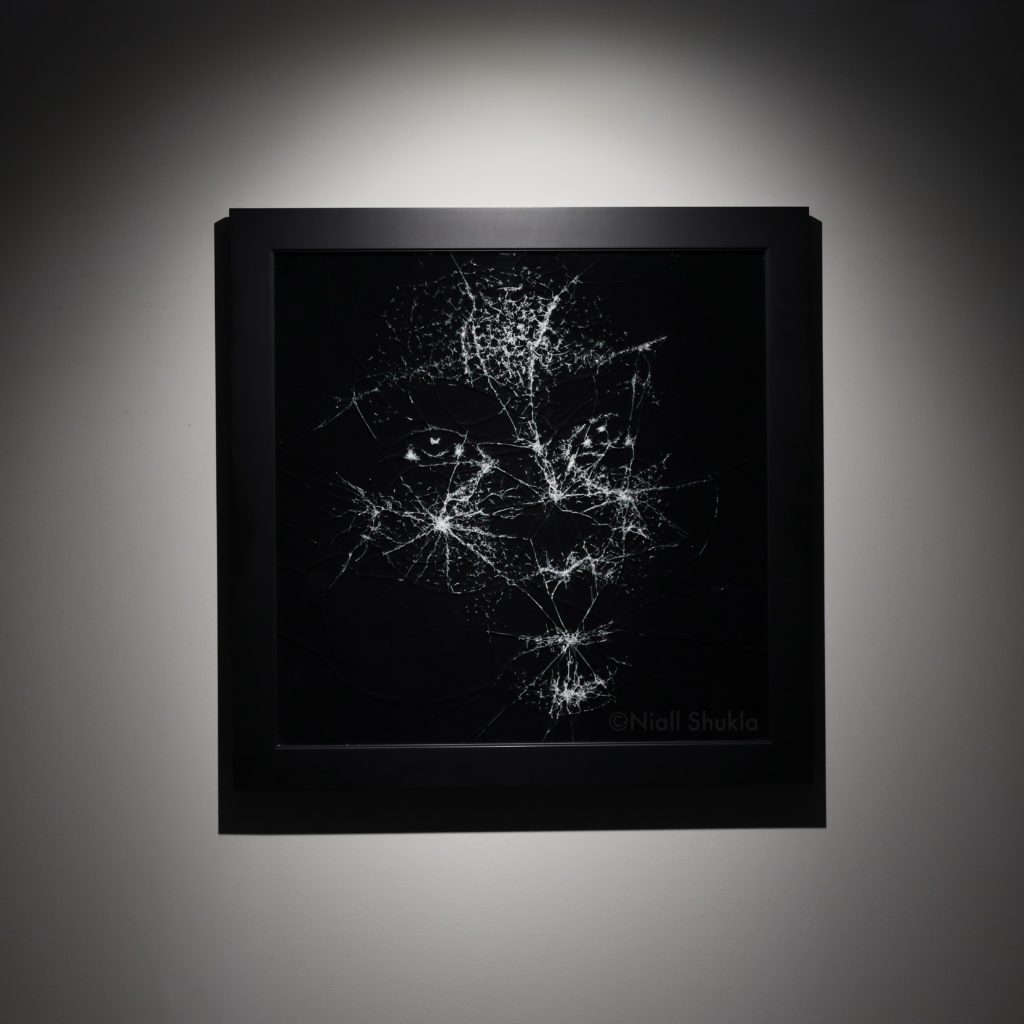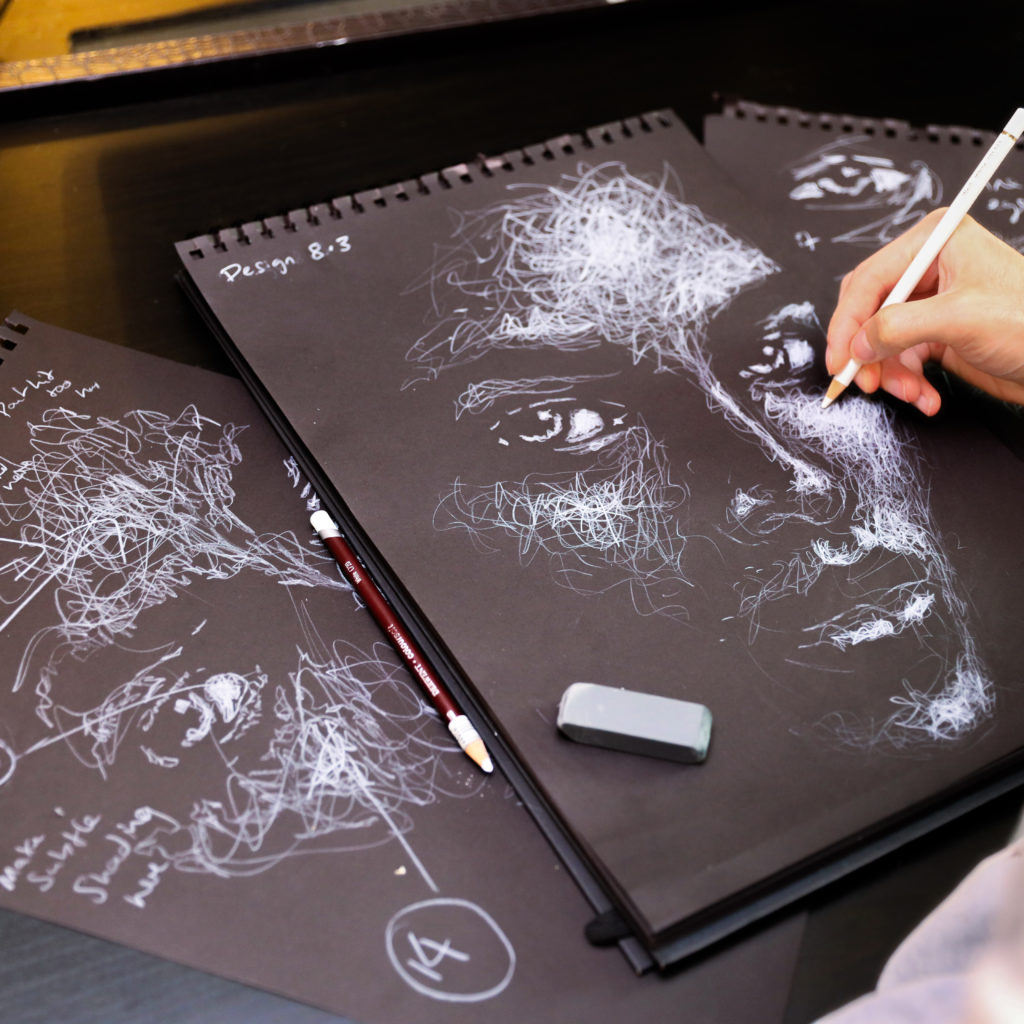Share the post "Between glass sculptures and award-winning films. Interview with broken glass artist Niall Shukla"
Niall Shukla, Broken Glass Artist and Film Director from the United Kingdom. Photo © Courtesy of the artist
Tell us what you do and your beginnings.
I came to this artistic medium in a slightly unusual way. Until a few years ago, my professional career was solely as a Writer & Film Director (A Doll Distorted and Guilt, the films). My last film qualified for a BAFTA and an OSCAR was selected for over 60 festivals and won 12 Jury Awards. I then began working on the scripts for my first feature film. Writing is a lengthy process with lots of planning that can take months or years. I think I started making physical art again just as an occasional break away from the writing process.
I had no agenda; I was just making art for myself. But then I decided to share my work online and my work went viral — the first video I ever posted of my artwork gained over 4 million views in the first 4 days. And over my first year, I amassed a following of over 100k followers on different social media platforms. All of a sudden I had an art career as well as a film career.

In terms of my actual art: I create sculptures by carefully cracking glass to form impressions of human faces, animals, or whatever else I want to express. Working with glass is unpredictable, which is part of what I love about it. While each strike is meticulously planned in terms of placement and pressure, not every attempt is successful—one wrong hit, and I may need to start anew with a fresh piece of glass. This process means I can often go through several pieces of glass before achieving the final image.
What does your work aim to say?
I started working in this particular medium during a time in my life when I was in quite a sad and dark place emotionally and wanted to explore the idea of turning something negative into a positive. To me, this is one of the beauties of my medium. Breaking something is often seen as tragic, and I liked the idea of taking something broken and turning it into something positive and beautiful.
I feel like that’s something we all have to do in life when we encounter painful or difficult experiences. We have to find a way to turn our pain or negative experiences into something positive and life-affirming. I’m a firm believer that some of the most difficult experiences of my life have ended up being the most positive ones. What’s interesting is that making art during this difficult time in my life helped me emotionally emerge from that dark place.


Where do you find inspiration for your art?
My inspiration is an instinctual thing. I don’t know where it comes from, but I think it is like a muscle that gets stronger the more you use it. I of course am inspired by art, films, music, and literature. I get most of my inspiration from doing my actual art. The more you create, the more you stir the creative soup in your mind and the more ideas you get. You also reach a point where you have so many ideas that you know you won’t be able to do all of them, so you have to select the things that you think are most important to pursue.
Continue on MuseumWeek Magazine!
